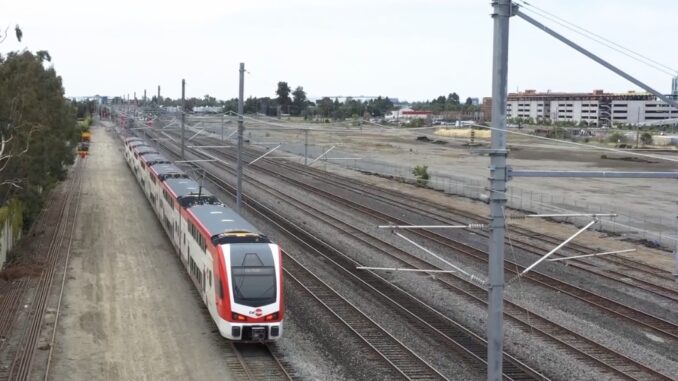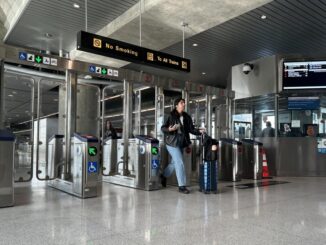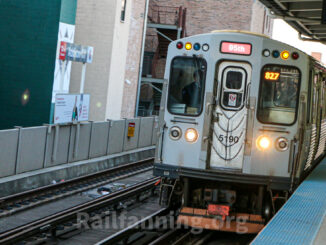
Caltrain has launched its new electrified schedule, taking the 160-year-old San Francisco-to-San Jose rail corridor from diesel power to electric for the first time.
Caltrain’s Electrification Project is the first diesel-to-electric transition in North America in a generation, heralding a new day in the legacy of American rail. The Electrification Project was funded by federal, state and local money.
With the new service, 16 stations will receive trains every 20 to 15 minutes during peak hours, weekend trains arriving twice hourly and express service from San Francisco to San Jose in under an hour.
Each trainset will have seven cars, as opposed to the current five to six. The new trains accelerate and decelerate faster than the diesel fleet, allowing more frequent stops in the same amount of time.
Diesel trains may still be occasionally used along the corridor in certain circumstances, such as a maintenance issue or emergency situation. Diesel freight trains will also continue to operate on Caltrain tracks.
Additionally, the new vehicles offer enhanced amenities, including free Wi-Fi, onboard digital displays, power outlets at each forward-facing seat, energy-efficient lighting, baby-changing tables in the bathroom, security cameras, an improved climate control system and expanded storage under the cantilevered seats. The electric trains also generate less noise than their diesel equivalent, making the trip more enjoyable for riders and residents who live near Caltrain tracks.
Caltrain celebrated the launch of the new service with free fares and celebratory events in every city along the corridor. Despite the initial celebration, a power outage forced Caltrain to pause services for more than an hour on Monday afternoon, SFGate reported.
Caltrain holds the safety of the public & its employees as its highest priority: it is both extremely dangerous to interfere with overhead wires & a felony in the state of California.
— Caltrain (@Caltrain) September 23, 2024




